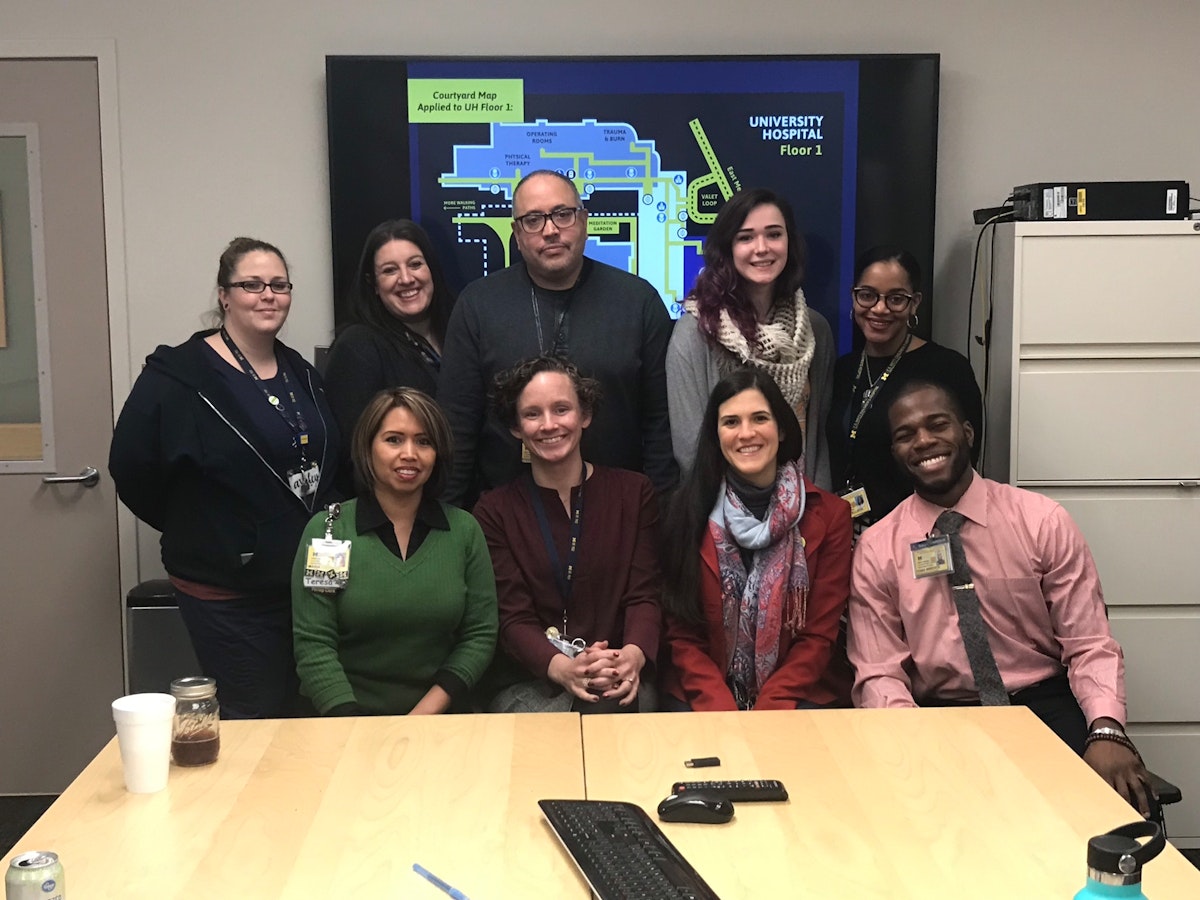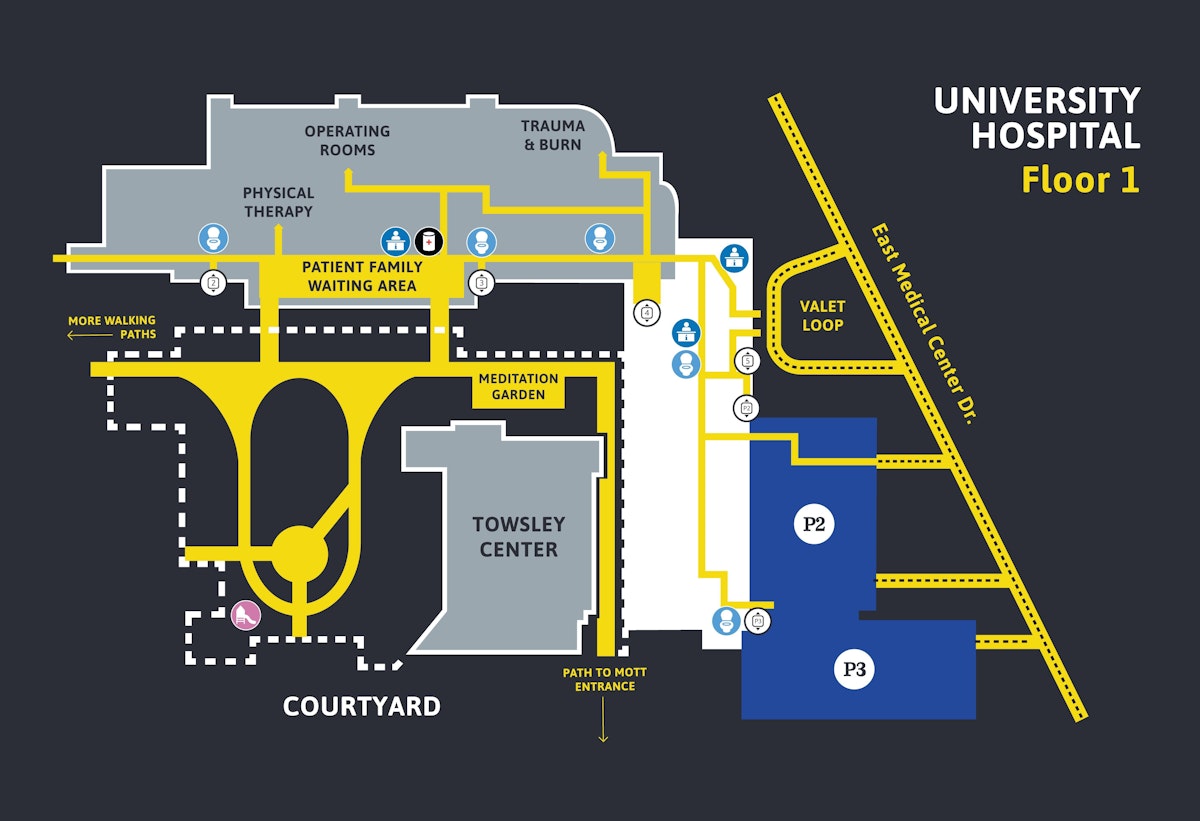Student Spotlight: Maddi Lelli + Michigan Medicine
During the Fall 2018 semester, Maddi Lelli (BFA ‘19) partnered with members of the Perioperative Care Unit at Michigan Medicine for an independent study to address wayfinding within the U-M Hospital.
Working with Rama Mwenesi, Perioperative Services Quality Assurance/Quality Innovations Manager and Jill Maloy, Operations Manager for Operating Rooms and Post Anesthesia Care Units, Lelli re-designed five hospital building maps in need of a re-fresh. She also created a proposal for a new map to detail the Michigan Medicine courtyard. Her design proposal includes a colorblind-friendly color scheme, inclusive and intuitive iconography, and an overall increase in legibility across both the icons and the text.
“I presented these designs and my research to a board of hospital administrators and staff, and I am currently still in touch with the PeriOp Unit administrators who are working diligently to implement some of my designs in the new year,” said Lelli.
For Lelli, the journey with Michigan Medicine began in Professor Kelly Murdoch-Kitt’s Interaction Design studio course (ARTDES 345), where the class worked with the Perioperative Care Unit on a range of bespoke design projects including patient family handouts, an online patient portal proposal, and new iconography for the hospital maps.

Bottom, L-R: Theresa Folmar, Jill Maloy, Kelly Murdoch-Kitt, Rama Mwenesi.
Photo credit: Michigan Medicine Perioperative Services Department
“Kelly has so much design knowledge and always knows how to point me in the right direction with regards to my research. Her straight-forward critiques are something I really appreciated,” said Lelli.
While the course drew to a close at the end of the Winter 2018 term, Lelli didn’t feel as if her work was done. “I kept thinking...what if we could indirectly improve the health of patients by decreasing stress, freeing up hospital staff, and changing the patient’s outlook on the hospital as a whole? These things are all possible through better design,” Lelli said.

Understanding the criticality of research in demonstrating the effects of design on physical health, Lelli’s proposal was influenced by Don Norman’s thoughts on the Aesthetic-Usability Effect (found in his 2004 book, Emotional Design: Why We Love (Or Hate) Everyday Things); Roger Ulrich’s “View Through a Window May Influence Recovery from Surgery” study; and Doug Dietz’s MRI scanner re-designs for General Electric.
“Being able to measure the effectiveness of my proposed changes was another really important aspect of the project,” said Lelli. “I had to propose some ways of getting feedback from patients and their families.” Through interviews with hospital administrators, staff, nurses, patients, and families, Lelli was able to gather the necessary data to support efficacy. She also met with the designer of the old maps to discuss the challenges and opportunities of the re-design.
For other students embarking on design projects with outside partners or clients, Lelli offers this advice for healthy collaborations: “In the digital age it can be temptingly easy to do everything over email, but I found the in-person conversations that I had with Rama and Jill produced some of the best feedback and learning experiences.”
To learn more about Maddi Lelli’s project, visit her portfolio.